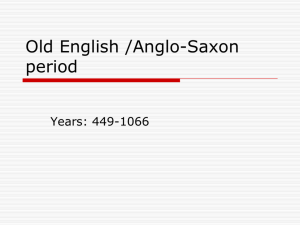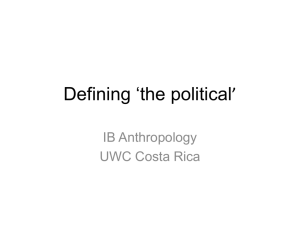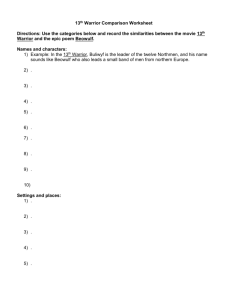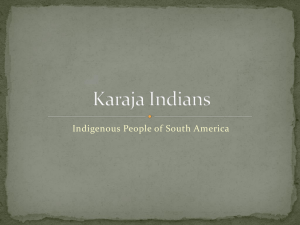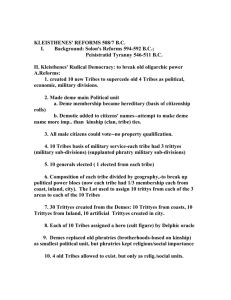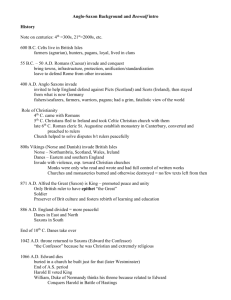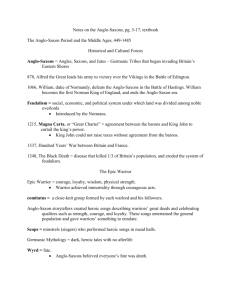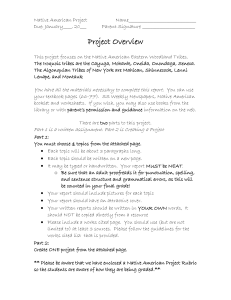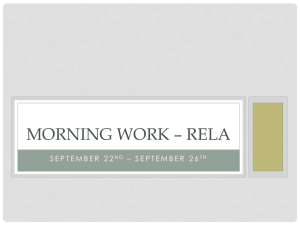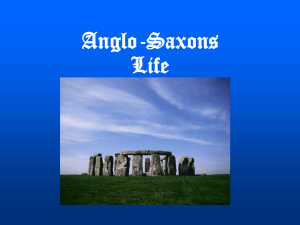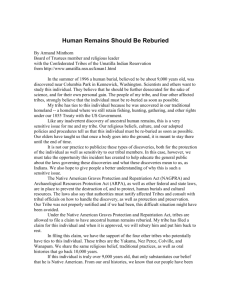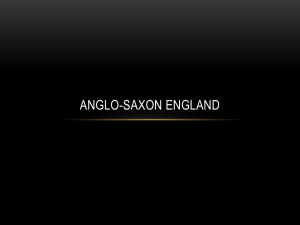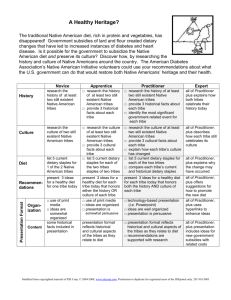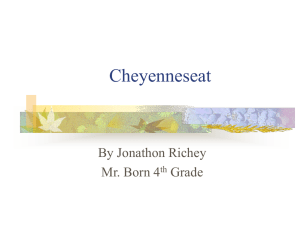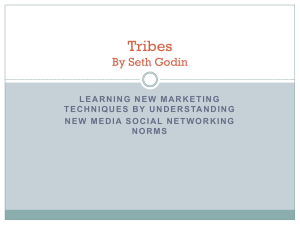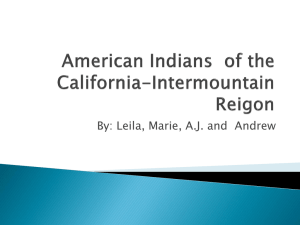20 FACTS About the Anglo
advertisement
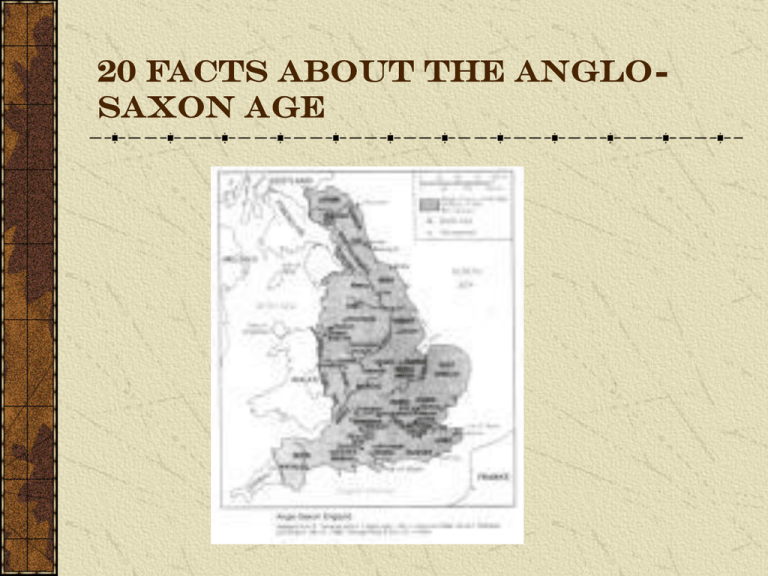
20 FACTS About the AngloSaxon Age Early Anglo-Saxons lived in groups called tribes These tribes had the following levels: The Leader – chosen for strength. Remained leader until defeated The Elders – older tribe members who had proven themselves in battle. The Warriors – strongest male members. Followed the leader without question. The Women – had some rights, but few The Philosophy of the Tribe: “What will be, will be.” Believed strongly in Fate. They used animal sacrifices to see “omens.” Very superstitious. The Meadhall The meeting place for each tribe was a building called the meadhall. Mead was the drink of the warriors. Mead is a sweet, alcoholic beverage made of honey, sugar, water, spices, and barley. Equipment of the Warrior Sword – steel blade and gold handle Coat of Mail – chain suit for armor Helmet – covered the head completely Spear – ash wood, with a banner Horse – provided by the leader whenever possible Shield – round, usually made of wood Cultural Influences on England Ancient Brythons 300 BC – c. 65 AD Romans – 55 BC – 409 AD Angles and Saxons – 449 – 1099 Came from Germany Danes – came from Denmark Vikings – came from Sweden Alfred I (871-899) One of the first leaders to unite all the tribes Religion Early Anglo-Saxons believed in many gods and goddesses. Their religion was very similar the ancient Norse religion. Woden or Odin – chief god. “Wednesday” Thunor or Thor – god of thunder and weather. “Thursday” Burial Rituals Burial involved god and elements of fire and water. Body was either placed on a stand and burned with all posessions, or placed on a boat with possessions and pushed out to sea. Christianity In 597 Augustine, a priest from Rome, brought Christianity to England. The tribes began to convert. Christianity had a calming effect on the tribal culture, and gave the Anglo-Saxons something in common with the rest of Europe. Storytellers An important person in the tribe was called a bard or scop. They were educated storytellers, and were treated as honored guests. Their tales of great warriors embodied the values of the culture. Beowulf Beowulf is the only complete story that exists today from this culture. It is the story of a great Swedish warrior who goes to help the King of the Danes with a terrible monster. The Anglo-Saxon Chronicles The only complete history of these early Anglo-Saxons in existence. Monasteries Became the stronghold of faith and learning. Valuable documents and treasures were stored there. They were the first places hit when tribes attacked each other. Epic The literature of this time was the “folk epic.” An epic is a long story, written in poetic form, about a hero who performs brave deeds. The theme was good versus evil, and good always won. Riddles Became popular with the scops. Only a few survive. On earth this warrior is strangely born Of two dumb creatures, drawn gleaming Into the world, bright and useful to men. It is tended, kept, covered by women-Strong and savage, it serves well, A gentle slave to firm masters Who mind its measure and feed it fairly With a careful hand. To these it brings Warm blessings; to those who let it run Wild it brings a grim reward. The Norman Conquest In 1066, England faces an invasion from William, Duke of Normandy, on the coast of France. He kills the last Anglo_Saxon King in battle and becomes William I of England. This ends the Anglo-Saxon Age and begins The Middle Ages.


